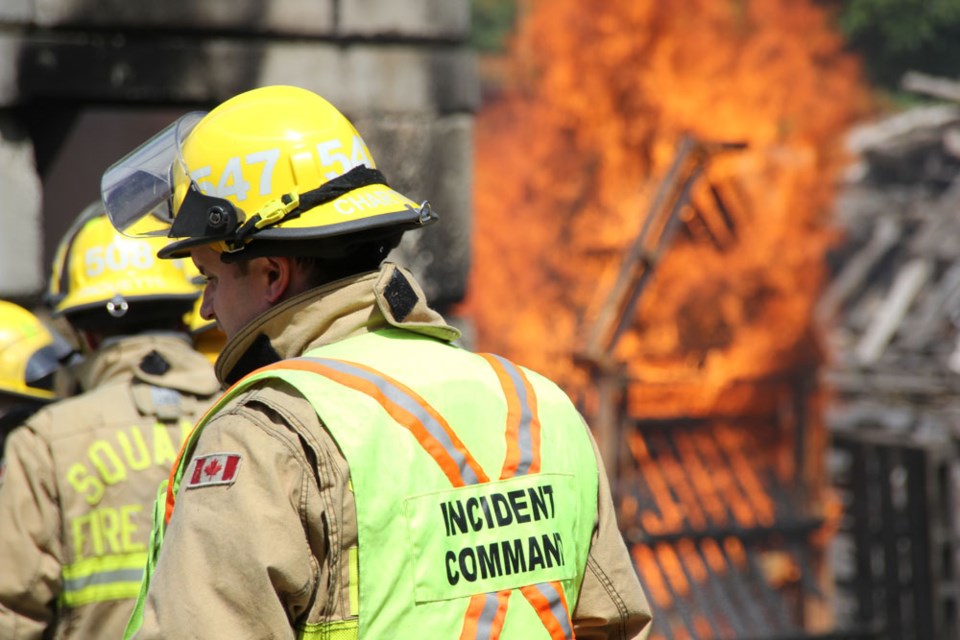As news of Australia’s catastrophic bushfires dominate headlines around the world, Squamish is working on regulations intended to stop local wildfires from spreading in town.
On Jan. 14, council directed staff to explore fire-prevention measures that could, in at least some cases, raise costs of new houses by $10,000 to $20,000 per single-family home.
During the Tuesday meeting, District staff a consultant and council members discussed the upcoming wildfire development permit area policy.
“The focus of this project is to put guidelines and rules in place so that we’re not building a bunch of homes that will put liability on the District and are at risk of burning,” said Bruce Blackwell of Blackwell and Associates, the municipality’s consultant for the project.
The idea is that any structures built in areas — which will be dubbed ‘wildfire development permit areas’ — that the District deems at-risk will be required to be built according to FireSmart standards. This would be a requirement for development permits in those zones.
Among other things, it’s proposed that homes in those areas are built with fire-resistant materials, which may be more costly. This could include fire-resistant roofing, double-pane windows, aluminum gutters, and the elimination of highly-flammable vegetation, among other things.
No firm decisions have been made, but staff asked council if they wanted to take a more aggressive approach, which may result in more costs to developers and homeowners.
Council seemed to be open to that proposition.
The proposed development permit area covers much of Squamish, but leaves out heavily developed areas such as downtown, Valleycliffe and the Garibaldi Highlands, among others.
Mayor Karen Elliott wondered if the wildfire development permit area should be extended to some parts of the Garibaldi Highlands and Valleycliffe, as embers blowing from forested areas could spark fires.
“I would be inclined to go with the mayor’s comments and consider extending this and making it harder — $20,000 on a new house is an extra cost, but, you know, you’re talking $500,000, $600,000, $800,000,” said Coun. Doug Race.
“I think this is a good time when it’s in front of everybody. Look at what’s happening in Australia and all media coverage it’s getting — it’s hard to argue against that.”
Race added an education component would be helpful, as he underwent a FireSmart inspection last year and found out his house was at severe risk. He said it allowed him to do relatively easy measures like eliminating highly flammable vegetation like junipers.
Coun. Chris Pettingill noted fire seasons are getting worse as climate change continues.
“Climate change — it seems to be outpacing the most aggressive predictions,” said Pettingill.
Throughout the meeting, Blackwell spoke of adding buffer zones from forests to keep fires from spreading to homes.
Blackwell said Australia hasn’t been able to keep up with preventative measures, like clearing vegetation and prescribed burns to remove fuel for fires.
Much of their policy reviews have been centred on firefighting, he said.
“Our policy reviews have been good in that they’ve moved us to focusing on our vulnerabilities,” said Blackwell.
“We need to be prepared rather than react to these fires. We need to spend more money on prevention, and I consider this type of work to be prevention.”



